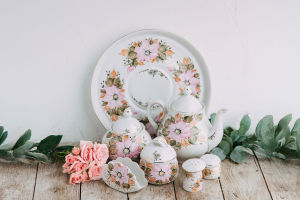What feeling should arrive first when you step into the living room—exhale, gather, or play? That answer becomes your blueprint.
A welcoming space favors comfort, conversation, and small rituals over perfection. Use the steps below to design a room that looks calm, flows well, and invites people to linger.
Plan Zones
Think beyond a single seating cluster. Carve out mini-destinations: a reading nook with a floor lamp, a conversation area around a low table, and—if space permits—a compact games zone. Arrange pieces so one area leads naturally to the next. Keep main walkways clear and continuous to encourage mingling.
Size Matters
Proportion makes or breaks comfort. Choose a sofa that fits the room’s height and width; undersized seating makes large rooms feel sparse. Maintain 90–100 cm pathways so two people can pass easily. Keep 35–45 cm between sofa and coffee table for reach. Use an area rug large enough that front legs of seating land on it.
Layered Lighting
Mood follows light. Combine three types: ambient (overall glow), task (reading and games), and accent (warmth and focus). Place floor and table lamps at varied heights to reduce glare. Choose warm bulbs in the 2700–3000K range with good color rendering so skin tones, art, and textiles look natural after sunset.
Comfort First
Build the room around seating you truly want to sink into. Prioritize supportive cushions, rounded edges, and durable, stain-resistant fabrics suitable for everyday life. Add ottomans or a wide bench to flex between lounging and extra seating. Comfort is what transforms a showpiece into a space people genuinely use and enjoy. Research in environmental psychology shows that well-designed, comfortable furniture significantly enhances relaxation, reduces stress, and promotes social interaction within living spaces (Vischer, 2008; Park & Farr, 2007).
Texture Therapy
Soft layers make modern rooms feel human. Pair a nubby rug with linen or cotton drapery; mix smooth stone or wood against cozy knits. Repeat textures in small hits—pillow, throw, tray—so the palette feels coherent. Texture is the quickest route to warmth without visual clutter.
Wall Stories
Bare walls read unfinished. Group framed prints, travel photos, or simple sketches into a gallery wall, or lean one large artwork on a console for an easy upgrade. Keep frames consistent or within one color family for calm. Place art at eye level and leave white space around pieces to let them breathe.
Personal Touches
The most memorable rooms showcase life, not staging. A stack of well-loved books, a handmade vase, or a clock found on a trip turns décor into narrative. Edit with intention: a few meaningful objects register more strongly than a crowded shelf. Style in threes—vary height, shape, and material for balance.
Daily Rituals
Design for the moments you want more of. Place a low, wipeable coffee table where snacks are easy to reach. Keep a basket of board games near the sofa. Set a small tray with tea supplies on a sideboard. When favorite activities are visible and within reach, people gather without prompting.
Color Cues
Aim for calm, not bland. Start with a warm neutral base—soft white, oatmeal, or pale greige—then add one quiet color family like moss, clay, or ink. Use a 60/30/10 ratio (dominant/secondary/accent) so the palette feels intentional. Echo colors in pillows, throws, and art to knit zones together.
Storage Smarts
Clutter disrupts connection. Hide remotes, chargers, and toys in lidded baskets or drawers within arm’s reach of seating. Choose a media console with cable management. A five-minute evening reset—fold throw, clear surfaces, align cushions—preserves the restorative mood you worked to build.
Acoustic Ease
Sound shapes comfort. Soften echoes with a well-sized rug, lined curtains, and upholstered seating. Add fabric-backed art or a pinboard in a hallway to dampen noise from adjacent spaces. Even small acoustic tweaks reduce fatigue and make conversation feel effortless.
Green Notes
A touch of nature animates neutral rooms. Place a tall plant near a window to pull the eye upward and add gentle movement. Use a branch in a simple vessel as a sculptural centerpiece. Keep pots and planters within the room’s palette so greenery reads as part of the design, not an afterthought.
Expert Opinions
Interior educators consistently recommend planning circulation first; generous walkways and clear sightlines make rooms feel welcoming. Lighting consultants emphasize layered fixtures and a single, warm color temperature throughout to avoid patchy ambiance. Environmental psychology research points to the benefits of natural light, soft textures, and personal artifacts for reducing stress and encouraging social connection. Together, these principles explain why warm minimalism and curated comfort outperform purely decorative schemes.
Quick Checklist
Define zones with furniture and a large rug.
Right-size the sofa and keep pathways open.
Use ambient, task, and accent lighting with warm bulbs.
Layer textures: rug, throws, pillows, drapery.
Curate meaningful art and objects, not many.
Provide concealed storage for a daily five-minute reset.
Add greenery and quiet, cohesive color.
Conclusion
A living room that feels like home blends flow, soft light, generous textures, and a few personal stories into one easy rhythm. Start with clear pathways, anchor with comfortable seating, and layer warmth through lighting, fabric, and art. Which change will you try first—reworking the layout, upgrading lamps, or curating a wall of memories to spark conversation?


